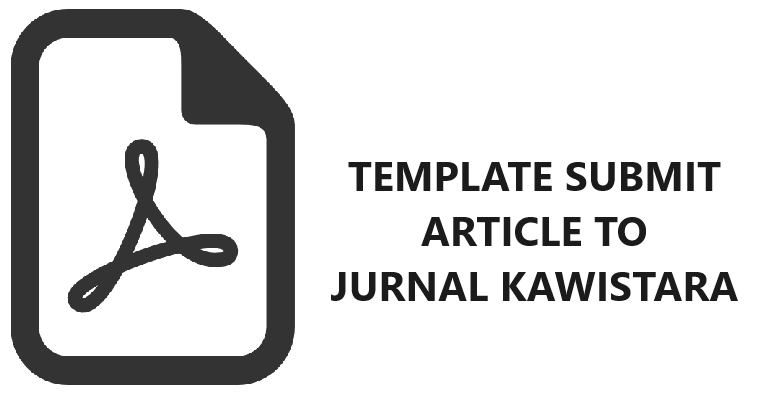Effect of Emotional Intelligence to Innovative Work Behavior of Employees Mediated with Tacit Knowledge Sharing in Education Department of Aceh
Riandy Oyadiwa(1*)
(1) Program Studi Master of Business Administration of Universitas Gadjah Mada
(*) Corresponding Author
Abstract
Keywords
Full Text:
PDFReferences
Arikunto, S. (2006). Prosedur penelitian : suatu pendekatan praktik, Ed. Rev. VI, Cet. 14. Rineka Cipta, Jakarta.
Aulawi, H. (2018). Improving Teacher innovation capability Through Creativity and Knowledge Sharing Behavior. IOP Conference Series: Materials Science and Engineering, 434(012242).
Avdimiotis S. (2019). Emotional intelligence and tacit knowledge management in hospitality. Journal of Tourism, Heritage & Services Marketing, 5(2), 3-10.
Bashir, M. and Farooq, R. (2019), The synergetic effect of knowledge management and business model innovation on firm competence: A systematic review, International Journal of Innovation Science, 11(3), 362-387.
Cabrera, Á., Cabrera, E.F. (2002). Knowledge-sharing dilemmas. Organization Studies, 23(5), 687-710.
Chai, K.H. Gregory, M. and Shi, Y. (2003).Bridging islands of knowledge: a framework of knowledge sharing mechanisms. International Journal of Technology Management, 25(8), 703-727.
Chakravarti, Laha, and Roy, (1967). Handbook of Methods of Applied Statistics, Volume I, John Wiley and Sons, pp. 392-394.
Draper, N.R. and Smith, H. (1981) Applied Regression Analysis. 2nd Edition, John Wiley & Sons, New York.
Ferreira, J. Mueller, J. and Papa, A. (2020). Strategic knowledge management: theory, practice and future challenges. Journal of Knowledge Management, 24(2), 121-126.
Ganguly, A. Talukdar, A. and Chatterjee, D. (2019). Evaluating the role of social capital, tacit knowledge sharing, knowledge quality and reciprocity in determining teacher innovation capability of an organization, Journal of Knowledge Management, 23(6), 1105-1135.
George, D., & Mallery, P. (2016). IBM SPSS Statistics 23 Step by Step: A Simple Guide and Reference (14th ed.). Routledge. Glejser, H. “A New Test for Heteroscedasticity,’’ Journal of the American Statistical Association, vol. 64, 1969, pp. 316–323.
Goleman, D. (1995). Emotional intelligence Bantam Books, Bantam Books, New York
Gupta, V. and Thomas, A. (2019). Fostering tacit knowledge sharing and innovative work behavior: an integrated theoretical view. International Journal of Managerial and Financial Accounting, 11(3/4), 320-346.
Hau, Y.S. Kim, B. and Lee, H. (2016). What drives employees to share their tacit knowledge in practice? Knowledge Management Research & Practice. 14 (3), 295-308.
Holste, J.S. Fields, D. (2010). Trust and tacit knowledge sharing and use. Journal of Knowledge Management, 14(1), 128-140.
Işık, C. Aydın, E. Dogru T. Rehman, A. Alvarado, R. Ahmad, M. and Irfan, M (2021). The Nexus between Team Culture, Innovative Work Behavior and Tacit Knowledge Sharing: Theory and Evidence, Sustainability, 13(8:4333).
Joshi, A. Kale, S. Chandel, S. and Pal, D.K. (2015). Likert Scale: Explored and Explained. British Journal of Applied Science & Technology, 7, 396-403.
Kropf, D.C. (2013). Connectivism: 21st Century’s New Learning Theory. European Journal of Open, Distance and E-Learning, 16(2), 13-24.
Lewis, A. and Smith, D. (1993). Defining Higher Order Thinking. Theory into Practice, 32(3), 131–137.
Liu, Z.G. Cui, J. (2012). Improve technological innovation capability of enterprises through tacit knowledge sharing, Procedia Engineering, 29, 2072-2076.
MacKinnon, D. P., Warsi, G., & Dwyer, J. H. (1995). A simulation study of mediated effect measures. Multivariate Behavioral Research, 30, 41-62.
Malik, S. (2020). Emotional intelligence and innovative work behavior in knowledge-intensive organizations: how tacit knowledge sharing acts as a mediator?. VINE Journal of Information and Knowledge Management Systems. ahead-of-print(ahead-of-print).
Malik, S. (2021), How multidimensional emotional intelligence impacts intra-organizational knowledge sharing behaviors of employees? Global Knowledge, Memory and Communication, ahead-of-print, ahead-of-print.
Mayer, J.D. Salovey, P. (1997). What is emotional intelligence? In P. Salovey & D. Sluyter (Eds). Emotional Development and Emotional Intelligence: Implications for Educators. Basic Books, New York.
Mayer, J.D., Caruso, D.R., and Salovey, P. (1999). Emotional intelligence meets traditional standards for an intelligence. Intelligence, 27 (4) 267-298.
Mládková, L. (2012). Sharing tacit knowledge within organizations: evidence from the Czech Republic. Global Journal of Business Research, 6(2), 105-115.
Montgomery, D. C., Peck, E. A. and Vining, G. G. (2001). Introduction to Linear Regression Analysis. 3rd Edition, New York, New York: John Wiley & Sons.
Mumford, M.D. Scott, G.M. Gaddis, B. and Strange, J.M. (2002). Leading creative people: Orchestrating expertise and relationships. The Leadership Quarterly, 13(6), 705-750.
Nayebi H. 2020. Advanced Statistics for Testing Assumed Causal Relationships. Springer
Nonaka, I. and Takeuchi, H. (1995). The knowledge-creating company. How Japanese companies create the dynamics of innovation. Oxford University Press. New York.
Orhan, N. and Dinçer, H. (2012). Relationship between emotional intelligence and innovative work behaviors in Turkish banking sector. International Journal of Finance & Banking Studies, 1(1), 21- 28.
Reychav, I. and Weisberg, J. 2010. Bridging intention and behavior of knowledge sharing, Journal of Knowledge Management, 14(2), 285-300.
Rismark, M. and Sølvberg, A. 2011. Knowledge Sharing in Schools: A Key to Developing Professional Learning Communities.
World Journal of Education, 1(2) Roberts, R.D. (2000). The Handbook of Emotional Intelligence: Theory, Development, Assessment, and Application at Home, School, and in the Workplace. Intelligence, 30, 209-210.
Shojaeia, M.R. and Siukib, M.E. 2014. A study of relationship between emotional intelligence and innovative work behavior of managers. Management Science Letters, 4, 1449–1454.
Wiley, D. (2006). Scalability and Sociability in Online Learning Environments. In O’neil, H.F. and Perez R.S. (1st Ed). Web-Based Learning: Theory, Research, and Practice. 295–306.Lawrence Erlbaum Associates, Californi a. Wong, C.S. and Law, K.S. (2002). The effect of leader and follower emotional intelligence on performance and attitude: An exploratory study. The Leadership Quarterly, 13(3), 243-274
Article Metrics
Refbacks
- There are currently no refbacks.
Copyright (c) 2022 riandy oyadiwa

This work is licensed under a Creative Commons Attribution-ShareAlike 4.0 International License.
Jurnal Kawistara is published by the Graduate School, Universitas Gadjah Mada.











